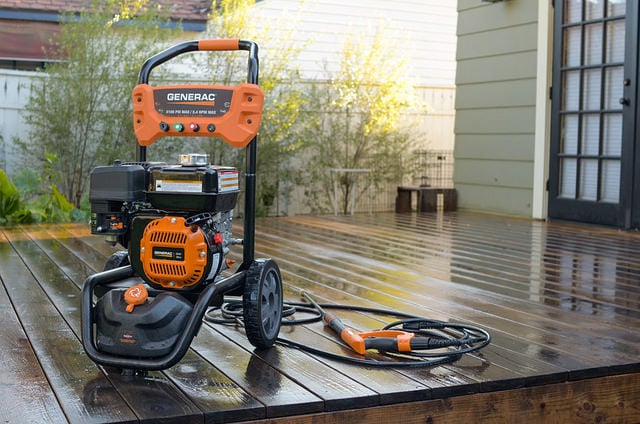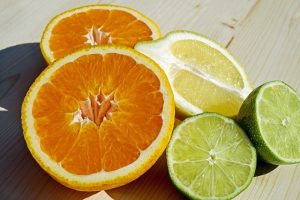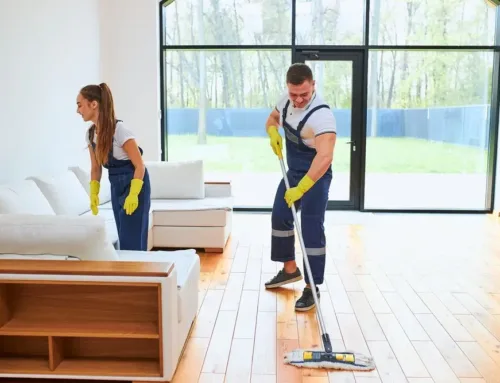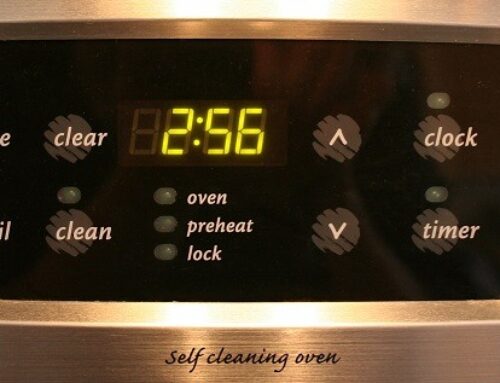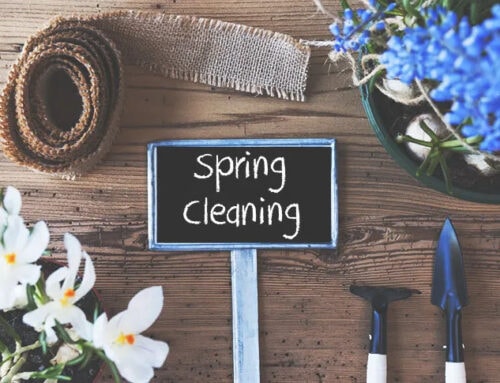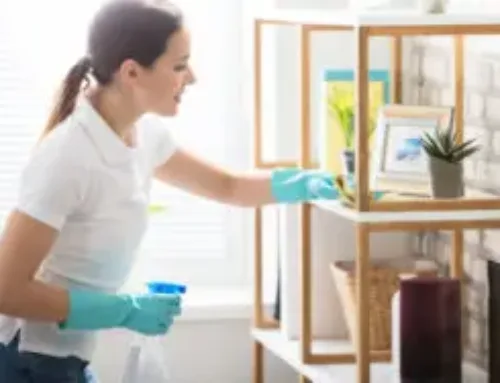Contents
How to destroy Toxic Mould in your home
Stachybotrys chartarum:
The Toxic Indoor Mould
Berlin D. Nelson, Professor, Department of Plant Pathology, North Dakota State University, Fargo (Berlin.Nelson@ndsu.nodak.edu)
Introduction

Fig. 1. An article from the Fargo Forum, May 1, 1997 (click image for larger view). |
Stachybotrys chartarum is a fungus that has become notorious as a mycotoxin producer that can cause animal and human mycotoxicosis. Indeed, over the past 15 years in North America, evidence has accumulated implicating this fungus as a serious problem in homes and buildings and one of the causes of the “sick building syndrome.” In 1993-1994, there was an unusual outbreak of pulmonary haemorrhage in infants in Cleveland, Ohio, where researchers found S. chartarum growing in the homes of sick infants. This incident increased the awareness of home/building moulds and brought this fungus to the immediate attention of the medical community. In recent years there has been a cascade of reports about toxic moulds in the national media. The New York Times Magazine, August 12, 2001, ran a front-page story on toxic mould. Newspaper articles (Fig. 1) such as “Fungus in ‘Sick’ Building” (New York Times, May 5, 1996) or “Mold in schools forces removal of Forks kids” (Fargo Forum, June 1997) are eye-catching news items. The nationally syndicated comic strip Rex Morgan ran a series on Stachybotrys, and television news shows have run entire programs on Stachybotrys contamination of homes. The fungus has resulted in multimillion-dollar litigations and caused serious problems for homeowners and building managers who must deal with the human issues and remediation.
As a mycologist, I have been advising public officials and the general public on the issues concerning indoor moulds. Our region experienced one of the greatest natural disasters of modern times when the Red River flooded in 1997. In Grand Forks, ND, alone, there were 9,000 flooded homes. There was an enormous need for information on the effects of the flood on human health in the Red River Valley. Because of the increasing awareness of moulds in indoor air quality, a coordinated effort by city, state and federal officials to provide information on mould prevention was undertaken. In my observations following the flood and in subsequent years of dealing with indoor mould issues, I have been impressed with the common occurrence and extensive growth of S. chartarum in homes and buildings damaged by floodwaters or other types of water incursions and the lack of knowledge by the general public and public and private institutions about this fungus. This review provides information on the fungus, its biologically active compounds, the history of the problem, the controversy about this fungus, and briefly comments on detection and remediation.
The Fungus

Fig. 2. A culture of S. chartarum on PDA (click image for larger view). |
Stachybotrys chartarum (Ehrenb. ex Link) Hughes (synonyms= S. atra, S. alternans) was first described as S. atra by Corda in 1837 (5) from wallpaper collected in a home in Prague. It is a member of the Deuteromycetes, order Moniliales, family Dematiaceae, and is common on plant debris and in soil. The taxonomic treatment of the genus by Jong and Davis (38) is a good reference on identification while Hintikka (27) provides general information on biology. The fungus grows well on common mycological media such as potato dextrose, V-8 or cornmeal agar, and sporulates profusely forming dark masses of conidia (Fig. 2). The fungus is relatively easy to identify because of the unique phialides of the genus and conidial morphology of the species. Conidiophores are determinate, macronematous, solitary or in groups, erect, irregularly branched or simple, septate, dark olivaceous, and often rough walled on the upper part. The phialides are large, 9-14 µm in length, in whorls, ellipsoid, olivaceous, and often with conspicuous collarettes. Conidia are ellipsoidal, unicellular, 7 to 12 by 4 to 6 µm, dark brown to black and often show a ridged topography when mature. The ridged nature is readily apparent with scanning electron microscopy (Figs. 3 and 4), but can also be observed with an oil immersion lens at 1000x. On lower power, the spores appear verrucose. Young spores and some mature spores may be smooth. The phialides produce conidia singly and successively into a slime droplet that covers the phialides. Eventually, the slime dries and the conidia are covered with the slime residue and remain on the conidiophore as a mass or ball of spores (Fig. 3). The spores are therefore not readily disseminated in the air compared to other fungi such as Aspergillus. However, when the fungus and substrate dries and is disturbed by mechanical means or air movement, conidia can become bioaerosols. A genus similar to Stachybotrys, but with spores in chains is Memnoniella (38); it also has species that produce trichothecenes (35). Haugland et al. (21) have proposed relegation of Memnoniella to synonymy with Stachybotrys based on morphological characteristics and comparative sequence analysis of the nuclear ribosomal RNA operon.

Fig. 3. The mass of conidia of S. chartarum at the tip of the conidiophore. Parts of the whorl of phialides are visible. The slime was mostly removed by the fixative. Scanning electron micrograph (click image for larger view). |

Fig. 4. A conidium of S. chartarum showing the ridged surface of a mature spore. Scanning electron micrograph (click image for larger view). |
S. chartarum growing on natural or man-made substrates can often be identified by a person familiar with its growth pattern. However, there are some very dark dematiaceous Hyphomycetes that look similar, therefore a microscopic examination of the fungus is needed to confirm identification. When the fungus is actively growing, the characteristic phialides and conidia are easy to observe, but when dry, the phialides collapse, are more difficult to observe, and emphasis must be placed on the morphology of conidia. Although the traditional method of identification is based on the morphology of the sporulating structures, PCR primers specific for S. chartarum are reported and may now be used in commercial microbiological laboratories to identify this fungus (7,20,58). A PCR product analysis using a fluorogenic probe has also been developed to quantify conidia of S. chartarum and can be used in the analysis of samples from mould contaminated indoor environments (22,52,58).
The fungus is strongly cellulolytic and will grow under conditions of low nitrogen. A simple way to grow the fungus is to streak some conidia onto wet Whatman filter paper in a petri dish and within a week spores are produced. If spores are placed on a small ridge made in the paper, the conidiophores will grow at an angle and allow a side view of conidial formation with a stereoscope. This is a convenient method to determine if spores are in chains to distinguish Stachybotrys from Memnoniella. Also, the filter paper method will allow isolation of S. chartarum away from many other fast-growing, but non-cellulolytic fungi that would out-compete S. chartarum on rich media.
Mycotoxins and Other Biologically Active Metabolites
The mycotoxins and other biologically active compounds produced by S. chartarum are of concern to human health (23,32,33,57). Mycotoxin poisoning by this fungus is referred to as stachybotryotoxicosis.
S. chartarum produces a variety of macrocyclic trichothecenes and related trichoverroids: origin E and L-2; satratoxins F, G, and H; isosatratoxins F, G, and H; verrucarins B and J; and the trichoverroids, trichoverrols A and B and trichoverrins A and B. The satratoxins are generally produced in greater amounts than the other trichothecenes, but all compounds are produced in low quantities. They apparently occur in all parts of the fungus (53). The difficulty in obtaining, identifying, and purifying these toxins has slowed extensive studies on their biological activity. Hinkley and Jarvis (23) recently published analytical methods for the identification and quantification of bioactive compounds produced by this fungus. These methods were designed to quantitate individual compounds in culture extracts and detect low levels of trichothecenes in samples.
Macrocyclic trichothecenes are highly toxic compounds with a potent ability to inhibit protein synthesis (32). Numerous studies have demonstrated the toxicity of toxins from S. chartarum on animals and animal and human cells (42,45,49,51). Yang et al. (62) reported that satratoxin G was the most cytotoxic of eight trichothecenes tested on mammalian cells, even more, toxic than the well known T-2 toxin associated with alimentary toxic leukaemia. Other researchers have also reported the high toxicity of satratoxins compared to other trichothecenes (18). The LD50 in mice for satratoxins is ~1 mg/kg (32).
In addition, the fungus produces nine phenylspirodrimanes (spironolactone and spirolactams) and cyclosporin, which are potent immunosuppressive agents (33). Jarvis et al. (33) suggested that the combination of trichothecenes and these immunosuppressive agents may be responsible for the observed high toxicity of this fungus. New biologically active compounds are still being discovered in cultures of S. chartarum. Hinkley et al. (24,25) recently described the metabolites atranones A-G and two dolabellane diterpenes, but the complete biological activity of these compounds is unknown. Vesper and colleagues (57,59,60) reported some isolates to produce Stachylysin, a hemolysin (compounds that lyse erythrocytes), and a hydroxamate siderophore. They suggest these compounds could be pathogenicity factors involved in pulmonary haemorrhage in infants exposed to S. chartarum.
There is considerable variation among isolates of S. chartarum in the production of mycotoxins and other metabolites (2,24,27,34,40). Indeed, Hinkley et al. (25) suggest there are two chemotypes of the fungus: the atranone and the macrocyclic trichothecene producers.
History of the Problem
In Ukraine and other parts of eastern Europe during the 1930s, there were outbreaks of a new disease in horses and other animals that was characterized by symptoms such as irritation of the mouth, throat, and nose; shock; dermal necrosis; a decrease in leukocytes; haemorrhage; nervous disorder; and death (Fig. 5) (10,14,17,26,28). In 1938, Russian scientists determined the disease was associated with S. chartarum (then known as S. alternans) growing on the straw (Fig. 6) and grain-fed to the animals. Intensive studies were then conducted resulting in the first demonstrated toxicity of S. chartarum in animals. Horses were actually fed cultures of the fungus. Contents from 30 Petri plates containing the fungus were fed to horses and resulted in death, while even the contents of one plate resulted in sickness. Horses seem to be especially susceptible to these toxins; 1 mg of pure toxin is reported to cause death (14). Most outbreaks were associated with hay or feed that became infested during storage under wet conditions. The Russians coined the term stachybotryotoxicosis for this new disease. Since then, stachybotryotoxicosis has been reported on numerous farm animals from various parts of the world, especially in eastern Europe, but apparently has not been reported on animals in North America (26,55,61).
 |
 |
|||
|
Fig. 5. Hyperplastic dermatitis on a horse four days after feeding on straw infested with S. chartarum. Notice the scaly appearance of the upper lip area. Photograph reprinted from Sarkisov, A. Kh. 1954. Mikotoksikozi (Gribkovye otravleniia). Moscow. 216 pp. (click image for larger view). |
Fig. 6. Straw contaminated with S. chartarum (top) compared to clean straw. Persons handling this heavily contaminated straw could develop stachybotryotoxicosis (click image for larger view). |
In the late 1930s, stachybotryotoxicosis was reported in humans working on collective farms in Russia (10,14,17,29). People affected were those who handled hay or feed grain infested with S. chartarum or were exposed to the aerosols of dust and debris from the contaminated materials. Some of these individuals had burned the straw or even slept on straw-filled mattresses. The infested straw was often black from the growth of the fungus. Common symptoms in humans were rash, especially in areas subject to perspiration, dermatitis, pain and inflammation of the mucous membranes of the mouth and throat, conjunctivitis, a burning sensation of the eyes and nasal passages, tightness of the chest, cough, bloody rhinitis, fever, headache, and fatigue. Workers developed symptoms within two to three days of exposure to the fungus. Some members of the Russian teams investigating this disease rubbed the fungus onto their skin to determine its direct toxicity. The fungus induced local and systemic symptoms similar to those observed in naturally occurring cases. The article by Drobotko (10) is a good source of information on the Russian experience with this problem.
As recently as 1977 there was an outbreak of stachybotryotoxicosis among farmworkers handling infested straw in Hungary (1). The symptoms were similar to those described in Russia and began appearing about 24 hours after exposure to the fungus. One interesting result of the investigation was that S. chartarum was cultured from scraping made from symptomatic areas of the skin and from samples taken from the nose and throat. Most workers recuperated when they stopped handing the infested straw. In 1996 workers at a horticultural facility in Germany developed very painful, inflamed lesions on their fingertips followed by scaling off of the skin when they handled decomposable pots infested with S. chart arum (Fig. 7) (9). The pots were made of recycled paper.

Fig. 7. Pots made of recycled paper showing S. chartarum growing on the sides (notice the black blotches on the white spots). Photograph from Dill, et al., 1997. Mycoses 40:110-114. Reprinted by permission of Blackwell Wissenschafts-Verlag Berlin, GmbH. http://www.blackwell.de; http://www.blackwell.de/register/zeit_ver.htm. |
Between the 1950s and the 1980s, there were continued publications on S. chartarum but none that indicated a potential problem with S. chartarum in homes and buildings. In 1986, Croft et al. (6) reported an outbreak of trichothecene toxicosis in a Chicago home. Over a 5-year period, the family complained of headaches, sore throats, flu symptoms, recurring colds, diarrhoea, fatigue, dermatitis, and general malaise. Air sampling of this home revealed spores of S. chartarum. The fungus was found growing on moist organic debris in an uninsulated cold air duct and on some wood fibre ceiling material. The home had a chronic moisture problem that favoured mould growth. Extracts from the duct debris and contaminated building materials were toxic to test animals and several macrocyclic trichothecenes were identified in the extracts. When the mould problem was corrected, these symptoms associated with trichothecene toxicosis disappeared.
Since the paper by Croft et al. (6), there have been numerous reports of S. chartarum in homes/buildings in North America, but few definitive studies implicating the fungus as the primary cause of mycotoxicosis in indoor environments. One important paper by Johanning et al. (37) reported on the health of office workers in a flooded New York office building with high concentrations of S. chartarum on gypsum wallboard (i.e., sheetrock). The study concluded “. . . self-reported health status indicator changes and lower T-lymphocyte proportions and dysfunction as well as some other immunochemistry alterations were associated with onset, intensity and duration of occupational exposure to toxigenic S. chartarum combined with other atypical fungi.” Another intensive study by Hodgson et al. (31) described an outbreak of the disease in a mould-contaminated courthouse and office building. The occupants developed fatigue, headaches, chest tightness, mucous membrane irritation and pulmonary disease. The building had serious moisture problems due to various factors. Interior surfaces were heavily contaminated with S. chartarum, Aspergillus Versicolor and Penicillium species, and mycotoxins were identified in mouldy ceiling tiles and vinyl wall coverings. These researchers concluded that a mycotoxin-induced effect was a likely cause of disease. The primary fungus involved, however, could not be determined. Cooley et al. (4) reported on the correlation between the prevalence of fungi and sick building syndrome after a long study in schools where there were concerns about indoor air quality. They concluded that Penicillium and Stachybotrys species may be associated with sick building syndrome.
In 1993-1994 a cluster of cases of pulmonary haemorrhage and hemosiderosis in infants occurred in Cleveland, Ohio. Because this is rarely observed in infants, an intensive study into the cause of the problem was initiated. There were several factors associated with this outbreak, but an important finding was that all homes of these infants had high levels of total fungi and S. chartarum (based on air and surface sampling) (8,12). Furthermore, isolates of S. chartarum from the homes were shown to produce trichothecenes (34). The homes had previously sustained water damage which resulted in mould contamination. It was this Cleveland event that initiated the headline news of Stachybotrys. Additional evidence of the association of S. chartarum with pulmonary haemorrhage in infants has since been published (13,39,56,58). An important contribution to understanding the role of S. chartarum in this disease was the isolation of the fungus from fluid washed from the lungs of a 7-year-old boy (11). The child had chronic cough and fatigue, intermittent low-grade fever, and recurrent pneumonia. His home was damaged from a flood and in an area near the bedroom S. chartarum and other fungi were growing on wallpaper. The child became symptom-free when removed from the contaminated environment. This is apparently the first isolation of the fungus from human body fluids.
There is considerable controversy, however, about the role of S. chartarum in pulmonary haemorrhage in the Cleveland incident and in human health in the indoor environment (15,16,19,30,36,50,54). Some members of the scientific-medical community believe there is insufficient evidence to prove a solid causal relationship between S. chartarum and these health problems. Indeed, in 2000 the Centers for Disease Control and Prevention in Atlanta (3) published two reports critical of the study conducted in Cleveland and concluded that the association between S. chartarum and acute pulmonary haemorrhage/hemosiderosis was not proven. One of the most important areas where we lack information is the relationship between exposure to bioaerosols of S. chartartum (both in time and amount of the fungus) and effects on human health.
The possibility exists that there are multiple modes of action for S. chartarum to affect human health. Mycotoxicosis is clearly important but the immunosuppressant compounds may also have a role, although it is not clearly understood. The bioactive compounds may lead to lung dysfunction through various mechanisms (44,46). In addition, hemolytic compounds may be important, especially in infants (57). The presence of a hemolysin may lead medical investigators to view this fungus as a potential pathogen and not strictly as a mycotoxin producer. Also, the fungus could be an allergen (41). Plus, two or more of these modes may act together as suggested by Jarvis et al. (33).
Although there are many unanswered questions about the effects of S. chartarum on human health, the accumulation of data (from observations and research) over the past 65 years tells us that one should not handle materials contaminated with S. chartarum (without proper safety procedures) and strongly indicates that indoor environments contaminated with S. chartarum are not healthy, especially for children, and may result in serious illness.
How to destroy Toxic Mould?
Where S. Chartarum Occurs Indoors
The spores of S. chartarum are in the soil and are introduced along with floodwaters or the dust and dirt entering with the water incursion. Also, building materials at the time of construction can have a coating of dust or dirt that contains S. chartarum. The fungus is most commonly found in homes or buildings which have sustained flooding or water damage from broken pipes, roof, wall or floor leaks, condensation, etc. Wet conditions are required to initiate and maintain growth. It is most common on the paper covering of gypsum wallboard, but can be found on wallpaper, cellulose-based ceiling tiles, paper products, carpets with natural fibres, paper covering on insulated pipes, in insulation material, on wood and wood panelling, and on general organic debris (Figs. 8 to 10). The paper covering fibreglass insulation is another area for growth (Fig. 11). The fungus can be hidden in the ceiling, walls or floors with no or little visible evidence within the interior of the room. The spores, however, can contaminate the interior of the room through holes and cracks in the building materials (aided by negative pressure) or be transported via the air handling system. It can also be found growing in ducts if there is organic debris. Condensation due to poor design or faulty heating, ventilation, and air conditioning systems can promote the growth of the fungus. The fungus will usually produce large amounts of conidiophores and conidia giving the substrate a black appearance that can be slightly shiny when fresh and powdery when dry. I have observed the fungus growing profusely on the paper covering of gypsum wallboard within a week after floodwater was drained from a building.
 |
 |
|
|
Fig. 8. S. chartarum growing on the backside of water damaged gypsum wallboard (i.e. sheetrock) behind a basement shower stall. A high water table caused flooding in the basement (click image for larger view). |
Fig. 9. Heavy growth of S. chartarum and some other fungi on gypsum wallboard in a flooded school basement. This growth occurred about one week after the flood. It was removed before remodelling (click image for larger view). |

Fig. 10. Growth of S. chartarum along the base of gypsum wallboard (covering the insulation on a concrete wall) inside of a ventilation tunnel around the base of an elementary school. Notice the black areas at the base of the right sidewall. The spores were being drawn up into the classrooms, thus the entire gypsum wallboard had to be replaced and the tunnel sanitized. The tunnel was flooded to about 6 inches deep (click image for larger view). |

Fig. 11. Growth of S. chartarum on the paper covering (arrow) of fibreglass insulation. This paper was touching the paper covering of the gypsum wallboard ceiling, resulting in excessive growth of the fungus. The building had a roof leak that dripped onto the insulation and ceiling. The white ceiling is on the left. The paper is torn away from part of the fibreglass insulation (click image for larger view). |
Detection and Remediation
Detection of S. chartarum is usually done by visual inspection and/or air and surface sampling. Because this fungus is not readily airborne compared to other fungi, air sampling in a contaminated indoor environment may show low levels of spores in the air. Also, some media used for mould evaluation of indoor air are not adequate for the growth of S. chartarum. Inspection of potential sites of contamination, especially in covered and protected places, is a necessity to determine where the fungus occurs and the level of contamination. If areas contaminated with S. chartarum are discovered, do not attempt to solve the problem without following recommended safety procedures for working with toxic moulds, especially if heavily contaminated. Get advice if there is a serious problem.
These are some general comments about remediation. Refer to the guidelines in the New York website in the Author’s List of Related Links. If you disturb the contaminated areas (such as tearing them out), the dust created can increase exposure to the fungus and its metabolites. Dust control can be achieved through an application of a sodium hypochlorite solution. An approved respirator, gloves, and eye and skin protection are used to handle Stachybotrys. Contaminated materials can be disposed of in plastic bags to reduce the handling of infested materials. Barriers and negative pressure are used in seriously contaminated areas to vent the air outside and prevent the dust from going into non-contaminated areas of the building. Disinfecting the surface of contaminated materials, a common reaction to deal with moulds may kill the fungus on the surface, but mycelium within the substrate will often survive and grow again. Also, mycotoxins may accumulate in contaminated material (47,48). Removing contaminated materials is the best option. The paper by Vesper et al. (58) has a useful description of mould detection and remediation of a home. For more information on the assessment and control of bioaerosols see Macher (43).
Home and building owners have a myriad of questions on moulds and often need basic information and straightforward advice on how to correct a problem. Fortunately, public health departments, agricultural extension services, and many internet sites now have excellent information available on moulds. There are private microbiological services that can be found on the internet, and in some states, public universities, extension services, or health departments can offer assistance in mould identification. Home and building owners who suspect mould problems can also acquire the services of private consultants to test for and identify moulds, plus obtain advice on remediation.
To prevent indoor contamination by Stachybotrys and other moulds, aggressive action to correct moisture problems must be undertaken immediately!
The above article is taken from https://web.archive.org/web/20050828033934/http://www.apsnet.org/online/feature/stachybotrys/ which I just loved reading and sharing with my WordPress site.
Introducing: Mr Meticulous Cleaning Services
Mr Meticulous Cleaning Services has been looking after you and your friend’s and families’ homes and offices throughout Australia since 1995. We engage highly trained and skilled cleaners who take great pride in their results. Our team specialises in end of lease cleaning and commercial cleaning but produce a high level of professionalism and cleanliness in any facet of the industry.
We offer services for cleaning your home on a weekly or a fortnightly basis, for one-off deep cleaning services or end of lease cleans. Homes aren’t the only place we clean; end of builders cleans, or shop fit-out cleaning services are available. We understand all the work that goes into a building project and the last thing you want is for messy surprises at hand over. Our team is professional, reliable, and dedicated and will make sure your project is left spotless.
End of Lease Cleaning and our Bond Cleaning Service is something that we have become well known for. We have completed 1000’s of end of lease cleaning jobs for individuals and real estate agencies. Our Bond Cleaning Service not only offers general cleaning, but we also offer:
- Deep Cleaning
- Strata Cleaning
- Office Cleaning
- Mould removal
- End of Builders Cleaner
- Steam Cleaning Carpets
- High-pressure cleaning
- Event or Party cleaning
- Window and Glass cleaning
- Oven – Stovetop and Rangehood detailing
We look after everything for your end of lease cleans or Bond cleans so that we can guarantee your Bond is returned. Email Enquiries welcomed
Mr Meticulous Cleaning Services has a cleaning team near you. We charge only after the service and will correct, fix or discuss any situation. We offer seven days a week cleaning, and we’re 5 Star rated on Google, the most powerful and trusted search engine for reviews and social proof that I would put my trust in, and having a 100 % money-back guarantee, you just can not go wrong.
We are accountable; we are on all social media platforms. We are contactable, widely known, verified and trusted. We were cleaning in the ’90s and now the 000’s, and we will continue into the future and beyond.
Marc Hamilton has been the owner since its inception in 1995. Marc started and will continue to be the face and contactable person within this business. Always available. We are not a faceless, contactless, unknown person behind any website geared towards share prices and company earnings. Both Marc and our team of dedicated cleaners value working for you and hold a personal commitment and interest to provide the best service possible. We are in this together.
You are welcome to contact us on 0402 317 313 or office@mrmeticulous.com.au.
MOULD AND MILDEW ELIMINATION
End of Lease, Bond Cleaning, Deep Cleaning
Introducing: Mr Meticulous Cleaning Services
End of Lease Cleaning and our Bond Cleaning Service is something that we have become well known for. We have completed 1000’s of end of lease cleaning jobs for individuals and real estate agencies. Our Bond Cleaning Service not only offers general cleaning, but we also offer:
- Deep Cleaning
- Strata Cleaning
- Office Cleaning
- Mould removal
- End of Builders Cleaner
- Steam Cleaning Carpets
- High-pressure cleaning
- Event or Party cleaning
- Window and Glass cleaning
- Oven – Stovetop and Rangehood detailing
We look after everything for your end of lease cleans, or Bond cleans so that we can guarantee your Bond is returned. Email Enquiries welcomed
Your Cleaners can be weekly, daily, fortnightly, monthly, or a one-off cleaning service. Just let us know what you require.NDIS registered for participants and is ready to look after you or your loved ones in the NDIS self-managed or Plan managed
DEEP cleaning for you – this is how you should be doing it. We will supply you with 5-star service and eliminate all the issues associated with having cleaners at your premises.
We accept CASH – ACCOUNT and CREDIT CARD.
A highly trained and skilled team of cleaners who take great pride in the results they achieve. Our end of lease cleaners is the best.
End of Lease Cleaning and the Bond Cleaning Service is something that we have become well known for. We have completed 1000’s of end of lease cleaning jobs for individuals and real estate agencies. We see the degree of perfection an end of lease cleaning is expected.
Let us look after you and any cleaning needs, or just reach out and see how we can help you.
Marc 0402 317 313
Mr Meticulous Cleaning
office@mrmeticulous.com.au
https://mrmeticulous.com.au/get-a-quote-free-obligation-free/
Event Cleaning Services
. Types of EventsWhether it’s a formal event like a conference or something more festive like a wedding or birthday celebration, we know just how to organise your cleaning needs. Our cleaning crew knows how to handle all kinds of dirt. The events we can cater to include:
- Concerts
- Conventions
- Festivals
- Grand openings
- Holiday celebrations
- Parties
- Weddings
Pre-party Cleaning & Setup services you don’t need to worry about dirt and mess – we can take care of all these matters for you to concentrate on organising the event. Before the party starts, we can provide the following services:
- Sweeping
- Mopping
- Vacuuming
- Removing all dust and cobwebs
- Polishing the furniture
- Setting up tables and chairs
- Sanitising and deodorising bathrooms
- Cleaning light fixtures and mirrors
- Wiping sinks, kitchen surfaces, cabinets, and cupboards
- Spot cleaning walls
After Party & Event Cleaning services, don’t worry about the mess when the event is over. We will put everything back in order and can provide these services:
- Cleaning dishes and other party supplies
- Packing leftovers and storing them
- Dismantling furniture
- Reorganising chairs and tables in the
Event Cleaning Brisbane
Party Cleaning Brisbaneevent hall
- Collecting all items left at the venues
- Taking down decorations
- Cleaning all surfaces, including sinks and cupboards
- Vacuuming
- Sweeping
- Mopping
- Spot cleaning walls
- Sanitising toilets
Why Choose Mr Meticulous as an expert cleaning team. Our services include domestic, commercial, and industrial cleaning services. We also provide cleaning for events, ensuring that all your event cleaning concerns are addressed. We strive to deliver high standards of cleanliness for our customers. Large-scale Events#1 Event Cleaning services if you have an event for many people, preparations will require careful planning. Organising a large-scale event can be stressful, and hiring professional cleaners can leave you to focus on other tasks. succeed. We know how important it is to maintain a clean venue for your guests. We are confident that we will provide a service you are happy with within the unlikely event that you don’t feel satisfied with our service. We will redo the job until you are satisfied. Special Event Clean Up Services n general, we provide the following:
- Setting up the site
- Removing decorations and items after the event
- Pre-cleaning
- Post-cleaning
- Recycling
- Vacuuming
- Removing trash
- Email: office@mrmeticulous.com.au
- Advanced Cleaning Technology
- 100% Customer Satisfaction Guarantee
- Covid-19 Disinfection and Sterilisation
- 24 hours, 7 Days, Responsive To Your Needs
- Safe Work and Hygienic Practices adhered to
- End of Lease – Bond Cleaning
- Builders Clean or Office Cleaning
Suppose you are conscious of quality cleaning but are constantly let down by other cleaning companies. In that case, Mr Meticulous’s Cleaning Services teams will personally source the best cleaners for your day, time, area, and other requirements. Our commitment to excellent service and quality results will shine on your home or office. Our cleaners are fully insured and trained in cleaning at all levels, be it one-off, weekly, fortnightly or monthly, including window cleaning, oven cleaning, and carpet steam cleaning. Every cleaner has been 100% ID checked so that you are safe and protected. This is the exemplary reputation Mr Meticulous has maintained for over 30 years.
Mr Meticulous Cleaning Services is not matched in its cleaning performance and affordable cleaning packages. Giving you a unique and professional cleaning experience, whether it be for your home or commercial/office cleaning needs. End of Lease cleaning and Bond cleaning are our specialities. With all our years and 1000’s jobs successfully undertaken, we are your go-to at the end of lease cleaning business with total bonds returned. Strata Cleaning, Common area cleaners, Strata Managers, and Body Corp Services are all services we offer. Due to the need




